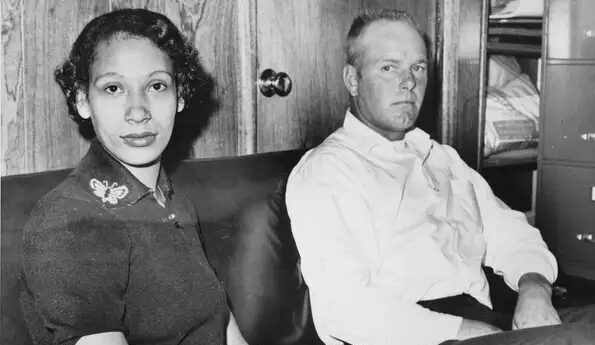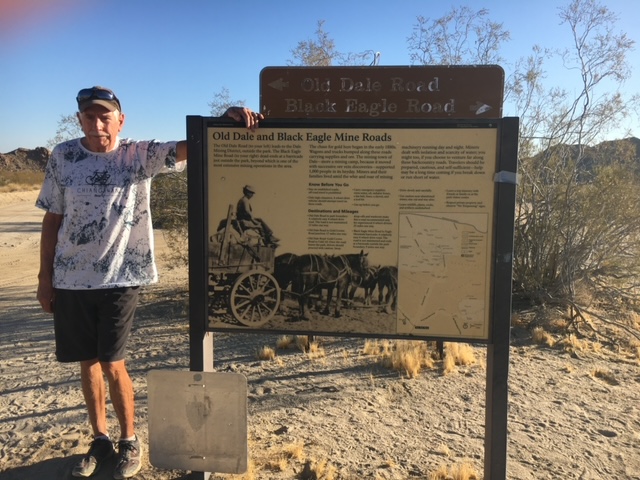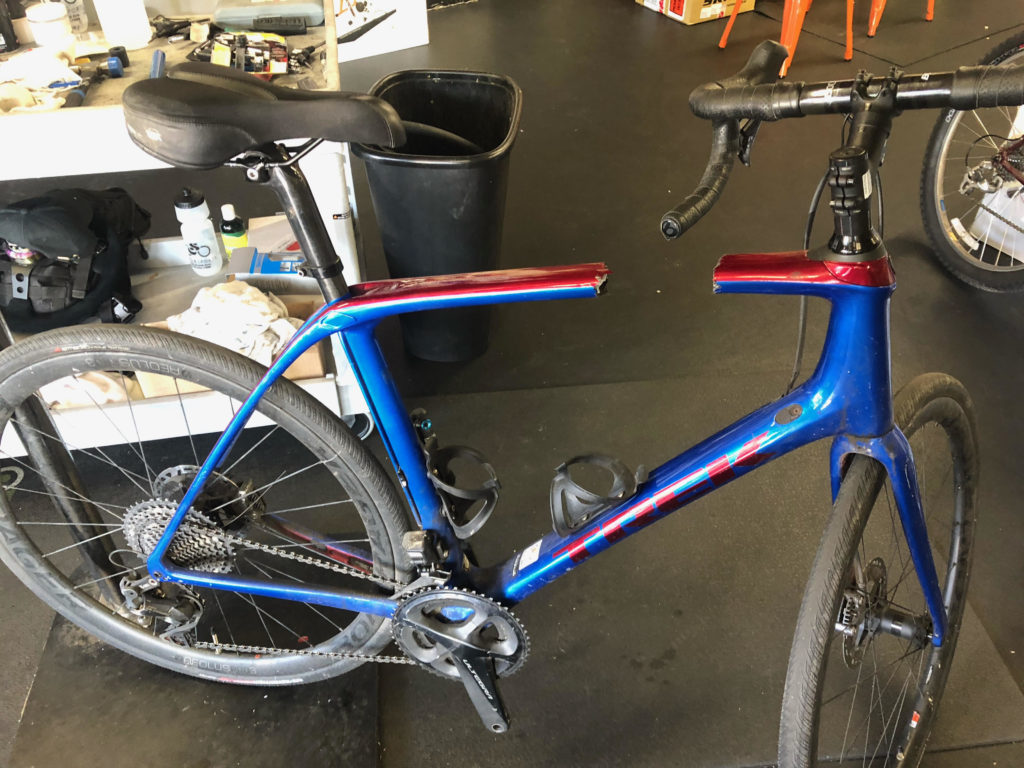
Dear Mr. and Mrs. Loving,
I can comprehend aloneness,
but your aloneness is too hard
for me. Never symbols, you were
just a name, just two persons
among the millions. Two persons
without defense.
Your helplessness faced force.
But obedience, endurance,
were the only choice, I guess.
There had to be anger, too,
some grudge in the obeying.
Later years, all the dust laid down,
your lives went on so quiet.
And so I’m left to wonder
what you cooked, and ate,
how you kept your house, where
you saved your money, worked.
I know that you had children,
a common having, as are long years
of widowhood and tending graves.
Now I’ve come to comprehend
your mystery, the final aloneness —
just the privacy of ordinary lives,
the equal, sometimes joyous,
hum-drum of us all —
coffee in the morning, toast,
fix the car, water the tomatoes,
grieve, complain about the heat —
all these accessories of love.
(It took me nine years to write this poem about Mr. and Mrs. Loving whose Supreme Court case ended any ban on marriages between persons of different races. I was and still am afraid of being presumptuous. But their love and the quiet of their lives was too strong a pull. It is surprising how dull the prose of the Court’s opinion is. Yet, like so much law, it uses the dry language of justice as a covering for beauty. And its effect was enormous: it allowed Mr. and Mrs. Loving to live their lives in peace. This poem will never be finished. I keep changing it and changing it in just little ways.)
Lawrence N. DiCostanzo
Best Non-fiction and Best Book of the Year!
Super-Infinite: The Transformations of John Donne
by Katherine Rundell
This biography is a relatively short and superb review of the life and white-hot mind of our greatest poet of sexuality and also our most astounding preacher (as in “for whom the bell tolls”). The author, who has a gift for words herself, says Donne took Elizabethan love poetry down a dark alley and knifed it. Later in life, he filled St. Paul’s Cathedral in London with avid listeners. His years of hardship were more numerous that his years of success, but he was a loyal husband and the father of seven living children whom he raised on his wife’s death.
Best Fiction
Cancer Ward
by Aleksandr Solzhenitsyn
This long novel is a panorama of Soviet society in the time of Stalin as seen through the lens of a cancer hospital. But it is also an achingly gorgeous and slow love story between a physician and a patient who is a rough-and-ready permanent exile. The last pages at the least rival the last pages of Tolstoy’s Anna Karenina.
The Fiction I Liked
I see that, this year, my favorites were not contemporary books. But, I tell you, the nineteenth century and the 1940s produced some incredible stuff.
My Cousin Rachel
by Daphne Du Maurier
I found this in a street-side library and said “What the heck.” Well, what a great book, and now I see why Miss DuMaurier was so famous. The author does not interpret what’s going on. IMO it is a story of the mental illness of an unlikely candidate. Intense.
Dubliners
by James Joyce
Wonderful stories about nice people, drunks, men who play on women to get petty amounts of money, etc. It has one of the best stories on drunks that concludes with impending domestic violence that will make you so sad.
The Way of All Flesh
by Samuel Butler
This author is an incredibly elegant and easy writer. The book is what I think is called a bildungsroman, the history of a young man from childhood to adult. And this kid has quite a path that includes a clergyman father, prison, an unwise marriage, etc., etc. It is amazing to me to read the violence with which boys used to be raised. (Beatings occur in another book of the 19th that I read this year.)
The Tale of the 1002nd Night
by Joseph Roth
The author had been a journalist, and this may be why he has an eye for story. A brief royal sexual intrigue affects the lives of the people involved in it. How can a girl who honestly came by the money involved, lose it over time, and end up in jail? How can the noble cavalryman who loves her (but won’t admit it) end up losing his self-esteem and his money because of her. A great story.
Ivanhoe
by Sir Walter Scott
Yes, I read this entire old chestnut. People think of Sir Walter as a romantic, but he is definitely not. His book is full of nasty, greedy people, and Ivanhoe is rather dumb as is Richard the Lion Heart. The shining light is Rebecca, the Jewish maiden, who can articulate for us the life of an outsider. Sir Walter deserves a rethink.
Imperium
by Richard Harris
Mr. Harris writes about ancient Rome, and he did a fabulous book called Pompeii. Imperium is about the early career of Cicero when the Roman Republic was being undermined. It is a great novel of law and politics by a writer who knows his stuff. I should tell you there are no gladiators, bloodshed, or mayhem.
Marrow and Bone
by Walter Kempowski
Kempowski obliquely visits a great German trauma — the 1945 winter flight of the civilian population of East Prussia before the advancing Soviet army. In 1988, the protagonist, who was born during the flight, gets a chance to tour East Prussia as part of a group planning a car rally. He comes on the places of his parents’ deaths and is transformed from a dilettantish, youthful life, to a directed adult life. A lovely book, with some laugh-out-loud passages.
The Non-Fiction I Liked
Reader Come Home
by Maryanne Wolf
We all love to read, and Prof. Wolf tells points out that reading is a marvel of the plastic mind because we are not genetically disposed to read. She talks about deep, reflective reading, and the good use of digital reading. She realizes we have to read in both realms, and her ideas about being “biliterate” are great. You can catch her utterly charming presence on an Ezra Klein podcast of 2023. Her voice and intelligence turned me onto this book.
Ancient Iraq
by Georges Roux
Mesopotamia has always fascinated me, and M. Roux satisfies the hunger. He wrote about the subject originally for an oil company magazine, and then transformed his work into a book that covers pre- and early history, the Sumerians, and onward through the Babylonians and Assyrians with clear presentations of the many other peoples who have stomped over this territory — Aramaeans, Hittites, Amalekites, Elamites, et al. Due to clay tablets, we probably know more about day-t-day history there than for practically any other age. Amazing.
All the best for the New Year,
Larry/Lawrence/Lorenzo
I climb above the fog, yet do not know
The reason for this effort. Can it be
The pleasure when I draw up and see
How sunlight blankets rolling grassland with no
Dark tree to stitch it to the blue. I slow
And see the seam of the horizon smooth
Against a bowl of blue, the only truth
And world my distant forebears long ago
Could love. They hoped beyond that line
There await the lovely muscled herds, the streams
Of fish, the comfort of a hunt: in short, the Place
Where limbs feel happy aches. God, rushing by when time
Runs down, should see I have romantic dreams
And fondly scoop me up from this high place —
The cycling dawdler with the dreamy face.
Bury me in a meadow, some untilled waste,
Next to fields of lettuce or off the highway’s verge.
Let it be my stone, engraved in repeated rotation
Through timeless years. Where rabbits start in the grass,
Mice rustle, and slender king snake makes his way,
In the warm breezeless understory of bush and weed;
Where song sparrow hangs on sideways to dry stalk,
And kestrel teeters, flaps, teeters, on rigid feathers
Spread out in points. Here it is dry and quiet.
And, when the Resurrection comes, let the trumpet be
The brassy, tuneless vibration of the bee, against the clacking
Of locust wings. Let my waking eyes gaze up
On sweet fennel or Queen Anne’s lace in sun.
And, if God should come to look for me, Let Him be
The cyclist, pausing to rest. Hands light
On handlebars and saddle, He gazes on this modesty.
And let Him say: This is too good to waste.
Our Wednesday ride was cancelled due to the incessant rain. Many of the Wednesday riders still needed their hit of caffeine, pastry and great socializing.

A little self-deprecating humor from a couple VeloRaptos.
For those who say we take cycling too seriously 😉


Story found in a local email stream.
——–
This is a sad tale. The story has a villain and a victim. I am the villain, and my bike is the victim.
It all began on another perfect bay area biking Saturday. I met a couple of friends at Teatro in Orinda and we had a wonderful ride. When I returned to the car, I put my bicycle on the rack on the back of my car. Then, I must have gotten distracted. How?
Did I turn to say goodbye to someone? Maybe.
Was I focused on my audible book? Maybe. After all, I was on the last 50 pages of Neal Stephenson’s 3,000+ page Baroque Cycle and I wanted to see how it would end!
Is this an example of normal human error and fallibility? Absolutely. At least that’s what I’m telling myself to feel better.
Anyway, there is a small step after putting the bike on the rack that I seem to have overlooked. It involves securing the bike to the rack, and evidently it is an important step. I’ve had this bike rack for years, and I figure I have put my bike on it over a thousand times. If you think about, one error in a thousand isn’t an awful percentage. However, my bike might have a different opinion.
You’re probably wondering how I realized I had skipped this small step. I drove back to Montclair in a wonderful mood after a great ride. I was low on gas so I stopped, and stood by my car as it drank it’s fill. But I didn’t notice anything amiss. After that I stopped at my favorite pizzeria to pick up lunch (one advantage of doing long bike rides is you get to eat pizza). When I pulled over in front of the pizzeria, I looked in my rear view mirror and thought ‘where’s my bike’. My next thought was ‘did I stop home and drop it off?’. My next thought was something along the lines of ‘OH S***’. For a moment I thought it had been stolen. But then I remembered that it had not been out of my sight since I left Orinda. It was at that moment I realized who was the villain in this story.
I was briefly tempted to say “Oh Well”, and just go home. Fortunately, I had enough common sense to not do that. I realized that if the laws of physics were still in force, my bike must be somewhere between the Orinda and Montclair. I contemplated the possibility that the laws of physics had briefly been suspended, as this would be preferable to my own stupidity being responsible for all this. But I knew that the latter reason was probably true, so I retraced my steps.
A friend had bikes drop off his rack with no damage, so I was a little hopeful. In fact I once jumped out of his car to rescue a bike on a busy highway. We expected it to be totaled but it was rideable, and I rode it off the freeway. Certainly my own bike could fare just as well? No such luck.
Like a wounded bird thrown from the nest, it lay by the side of the highway. As might be expected, it was just past the on ramp from Orinda. It’s a place where a car accelerates while going uphill which provides a perfect opportunity for a bike to simultaneously reach escape velocity yet still hit the ground at 40 or 50 miles per hour. In case you’ve been wondering, I have definitively proved that falling on the ground at high speed is not advised for a carbon frame.
The patient was announced DOA at Cycle Sports. Fortunately, the death will not be totally in vain. The components are salvageable, so they can be transplanted to some deserving young frame. Also, Trek has a crash replacement policy that I might be eligible for. I will know on Monday about this, and also how long it will take to Trek to gestate a new frame. It’s possible, because its a crash, that I will be expedited. If not, it could be up to a 3 month wait. I’m glad so many people have discovered the joy of cycling during the pandemic, but I’m wishing there was some way those of us who have kept the bike companies going all these years could get some priority. Evidently, getting a bike is now up there with getting a vaccine, the only difference being that my age doesn’t help. A friend was gracious enough to loan me his spare bike which I rode today.
Are you wondering why I have bothered to tell this tale of woe at such length? I explained all this in detail to some folks this morning and realized that I would have to repeat it many times. I decided that those who are interested can read this email and that way I won’t have to remind myself on multiple occasions just how lame I was. Also, being able to joke about it a bit makes it easier to stomach.
I know you have one more question. Exactly what happened to the bike?! A picture is worth a thousand words. I suspect that when you view the picture below you will agree that it wasn’t a good idea to ride it home. I’m not sure if bike abuse is a crime, but if it is, I’m going to need a lawyer.
KTRSD, but make sure it doesn’t hit the ground at high speed!
WARNING: The Photograph below contains images that may be uncomfortable for some viewers and may induce bike-accident nightmares. Viewer discretion is advised.

- January: The Underground Railroad by Colson Whitehead
- February: War and Turpentine by Stefan Hertmans
- March: The Undoing Project by Michael Lewis
- April: LaRose by Louis Erdrich
- May: On Tyranny: Twenty Lessons from the Twentieth Century by Timothy Snyder
Even though you wear petite,
I should have known.
The way you hold your head,
the focused movement,
thrift in speech —
All were clues.
When you muscled the case of wine
into the trunk while
I was calling, “Wait! Wait!”
When you dug up the whole garden
with a rusty shovel.
When you dragged the garbage bins
up the driveway two by two —
I realized that twins would be no problem.
You’d suckle one at each breast
while chewing leather to downy softness
for me to wear on winter hunts.
You’d make our autumn fire,
spinning one stick on another.
You’d keep it going throughout the winter
to cozy up our share of cave.
You’d heat up water with hot rocks
and use the waiting time
to ply your awl for boots.
You’d swat the kids and laugh.
You’d be ever looking out
for fat and protein. And so in spring
you’d heft a load, and off we’d walk
to where the fish were running.
I’d use up secret hours
to make a necklace from
a thousand shells I’d found
and managed to hide from you.
Idea from Rob.
A lot of us love great books, and we have gotten up many hills discussing the books we have read. With that in mind, let’s try a book-of-the-month club for 2017. For those who are interested, here’s how it would work:
- At the beginning of each month I will send out an email with the title of this month’s book. If you want to read it, you can do so. Hopefully during the course of the month you’ll be on rides with others who have read the book and you can talk about it.
- If you don’t want to read it, don’t. This is totally optional for those who are interested.
- I am hoping that every month a different person will volunteer to suggest the book. I will organize and send out the monthly email. Let me know if you want to suggest the book for a future month.
- This has many of the benefits of a regular book club with none of the guilt. If you don’t feel like reading the book and don’t get around to it, there is no expectation. Added benefit – if you don’t really like the book and don’t want to finish it, but are mildly curious how it ends, you can find someone to tell you.
As I said, I’m hoping a different person will select a book every month. Since I’ve suggested this, I’ll go ahead and select the book for this month: The Underground Railroad, by Colson Whitehead. This book won the national book award and is one of the NY times five best fiction books of the year. It is a unique book that combines a historical novel with a touch of magical realism.